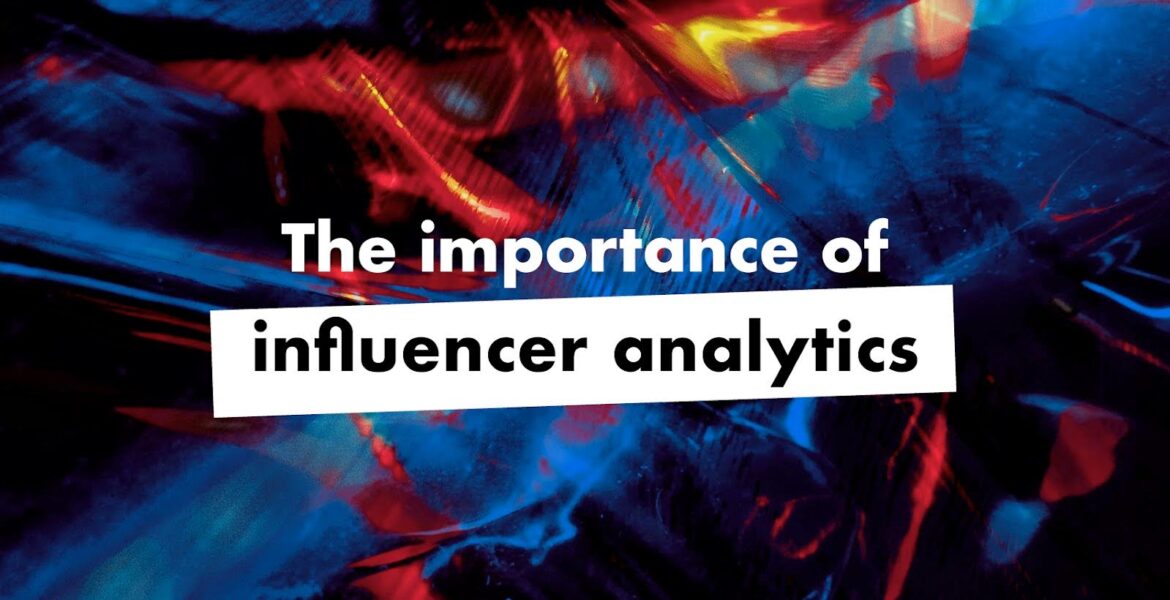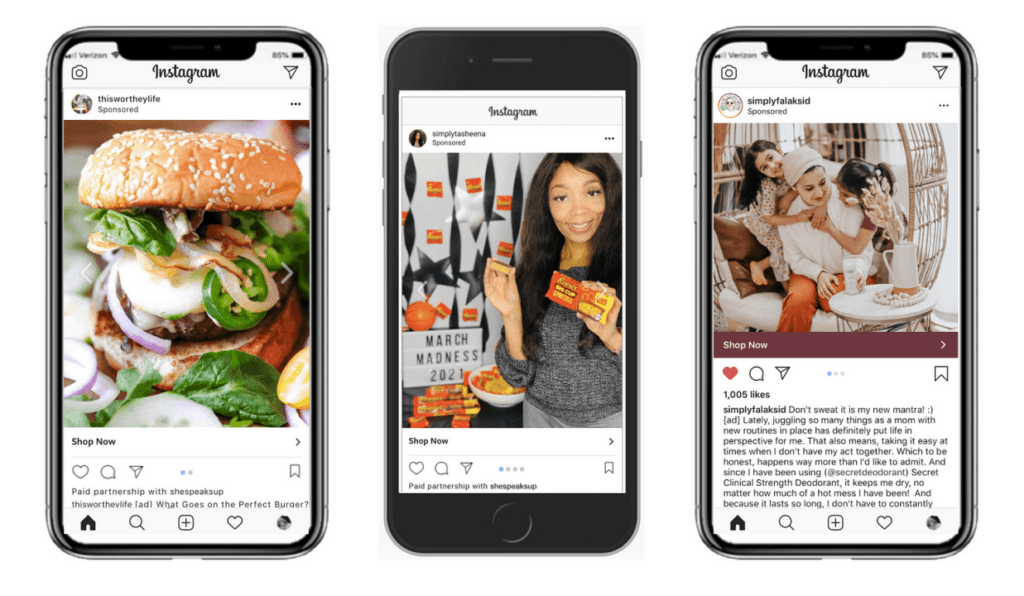
From Instagram to YouTube, influencers have garnered massive followings, effectively becoming trusted authorities in various niches. They wield the ability to sway opinions, spark trends, and influence purchasing decisions with content created online.
While the return of collaborating with influencers is undeniable, the true power of influencer marketing lies not just in the influencers themselves, also in the data-driven insights that underpin these partnerships. In this article, we will explore the importance of influencer analytics and how when used correctly, can have a huge impact on the way brands approach influencer marketing.
Understanding influencer analytics
Influencer analytics has become a vital tool for organisations looking to manage the complicated world of influencer marketing in the always changing landscape of digital marketing. Understanding what influencer analytics is and how it varies from conventional marketing metrics is crucial before we dig deeper into why they matter and how they can be used to achieve success.
Defining influencer analytics
Influencer analytics refers to the systematic collection, analysis, and interpretation of data related to influencer marketing campaigns. It involves monitoring various metrics and key performance indicators (KPIs) to assess the effectiveness of influencer collaborations. These metrics provide brands with insights into how influencers are impacting their marketing goals and the overall success of their campaigns.
Unlike of forms of digital marketing analytics, which often focus on metrics such as website traffic or click-through rates, influencer analytics zooms in on the specific performance of influencers and their content. It enables brands to answer essential questions like:
Are the influencers reaching the right target audience?
Influencer analytics helps determine whether an influencer’s followers align with the brand’s ideal customer demographics and psychographics.
Is the content resonating with the audience?
By analysing engagement metrics like likes, comments, shares, and click-through rates, influencer analytics reveals how well the content connects with the audience.
What is the return on investment (ROI) of influencer collaborations?
This aspect involves tracking sales, conversions, and other measurable outcomes directly linked to influencer campaigns.
Are influencers authentic and trustworthy?
Influencer analytics can help identify potential red flags, such as fake followers or inauthentic engagement, that might indicate less reliable influencers.
How influencer analytics differs from traditional marketing metrics
While traditional marketing metrics provide valuable insights into overall campaign performance, they often lack the granularity required for influencer marketing. Here’s how influencer analytics sets itself apart:
Focus on individuals: Traditional marketing metrics analyse campaigns as a whole, whereas influencer analytics hones in on individual influencers and their unique contributions.
Audience centric: Influencer analytics prioritises understanding the influencer’s audience, allowing brands to target their messaging more effectively.
Content centric: It emphasises the quality and impact of content produced by influencers, acknowledging that compelling content drives engagement and conversions.
ROI measurement: Unlike some traditional marketing efforts that can be challenging to tie directly to ROI, influencer analytics strives to quantify the financial impact of influencer collaborations.
Influencer analytics enables brands to make data-driven decisions that lead to more successful campaigns. As we move forward, we’ll explore why these data-driven insights are not just beneficial but essential in today’s influencer marketing landscape.

Why influencer analytics matter
To fully understand the significance of influencer analytics, it’s crucial to delve into why it matters and how it can be a game-changer for businesses seeking to harness the power of influencers.
Uncovering the ROI of influencer campaigns
One of the primary reasons influencer analytics matters is its ability to uncover the return on investment (ROI) of influencer marketing campaigns. While it’s relatively easy to see the immediate impact of influencer collaborations in terms of engagement, likes, and comments, determining the financial benefits can be more complex. Influencer analytics steps in to address this challenge.
Tracking sales and conversions: Influencer analytics allows brands to track how influencer-generated content translates into tangible results, such as website visits, product purchases, or sign-ups. This data enables businesses to calculate the revenue generated from influencer campaigns and assess their cost-effectiveness.
Measuring brand awareness and reach: Beyond direct sales, influencer marketing often plays a crucial role in increasing brand visibility and awareness. Analytics tools can quantify the reach of influencer content, helping brands gauge the extent of their message’s exposure and its potential impact on future consumer decisions.
How to identify the most effective influencers and creators
Influencer analytics is essential for selecting the best ones for a given brand or campaign because not all influencers are made equal.
Engagement rates: Measured by analytics tools are engagement rates, which include click-through rates, likes, comments, and shares. High engagement rates show that a user is actively engaging with an influencer’s content, which increases the likelihood that the user will be favourable to brand messages.
Authenticity and trustworthiness: By looking at elements like the existence of phoney followers or questionable engagement patterns, influencer analytics can assist in determining an influencer’s authenticity and trustworthiness. Genuine influencers tend to engage with their followers on a deeper level, which benefits brands.
Alignment with brand values: An influencer’s alignment with a brand’s values, mission, and product offerings is a crucial consideration. Influencer analytics can help brands evaluate this alignment, ensuring that partnerships feel natural and authentic to the audience.
Setting clear objectives and KPIs
A clear knowledge of objectives and key performance indicators (KPIs) is the cornerstone of any effective influencer marketing programme. Before establishing relationships with influencers, brands should:
- Establish objectives that are clear, measurable, and doable. These can include raising brand recognition, boosting revenue, or increasing website traffic
- Find pertinent KPIs that are in line with their goals. For instance, KPIs might include click-through rates from influencer-generated material if the objective is to enhance website traffic
Influencer analytics may be carefully designed to track progress and gauge success by establishing these benchmarks up front.
Selecting the right influencer tracking tools and platforms
Influencer analytics heavily relies on the tools and platforms used for data collection and analysis. It’s imperative for brands to:
- Choose influencer tracking tools that align with their campaign objectives. Some tools specialise in audience demographics, while others focus on content engagement or ROI tracking
- Ensure that the selected tools provide real-time data updates, allowing for agile campaign adjustments when necessary
Invest in platforms that offer comprehensive influencer data, including information on influencers’ authenticity and trustworthiness.

A/B testing and optimisation with influencer campaigns
An effective method for improving influencer marketing initiatives is A/B testing:
- Try out various content, messaging, and call-to-action (CTA) strategies to see what resonates with the target audience the most
- Utilise influencer analytics to assess the success of A/B tests and adjust your strategy as necessary
- Apply the learnings from A/B testing to upcoming campaigns, continuously enhancing their use of influencer marketing
Brands may optimise their campaigns for the greatest possible impact and return on investment by combining A/B testing with influencer analytics.
Planning, tool selection, real-time monitoring, and ongoing optimisation are required to maximise the impact of influencer analytics. Influencer analytics, when used wisely, can transform average influencer marketing efforts into extraordinary ones, ensuring that businesses achieve their goals while being adaptable in a quickly changing digital environment
In the fast-paced world of digital marketing, where trends come and go in the blink of an eye, influencer marketing has established itself as more than just a passing fad. It’s a dynamic, influential force that has reshaped how brands connect with their audiences and market their products or services. Yet, the key to harnessing the true potential of influencer marketing lies not solely in the charisma and reach of influencers but in the insights and intelligence provided by influencer analytics.
So, whether you’re a seasoned marketer or just dipping your toes into the world of influencer collaborations, remember this: to succeed in the age of influencers, you must embrace the power of data-driven metrics.

